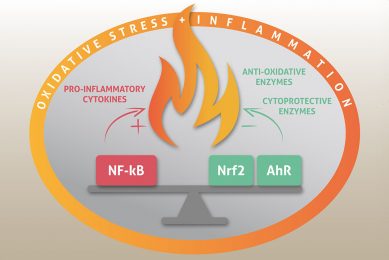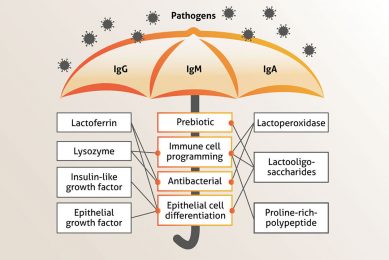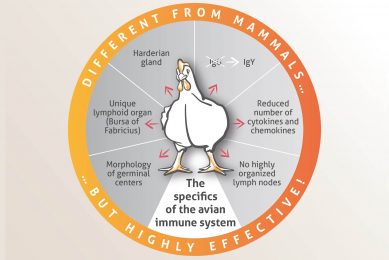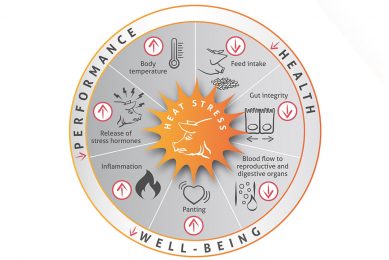Hot talks: How does bacterial translocation work and what can we do about it?
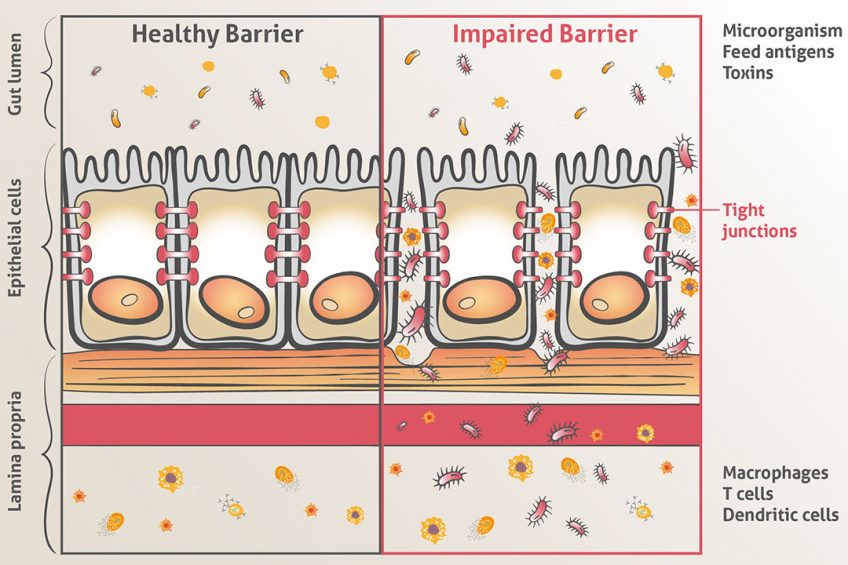
Feed additives company Phytobiotics has invited a panel of renowned experts from around the globe to share their knowledge and expertise into the interplay between the immune system, inflammation, the gut microbiota on the one hand, and animal health and performance on the other. In this article, the sixth in the series of ‘Hot Talks’, bacterial translocation and the importance of a good gut integrity will be discussed.
Anja Pastor: Good morning Christine, thank you so much for being with us today and to give us the opportunity to talk about a fascinating topic – namely bacterial translocation.
So let´s dive directly into the topic – what is bacterial translocation?
Christina Vuong: “Bacterial translocation is the inappropriate colonisation of bacteria from the gut into other parts of the body. The microbiota of the gut, even the beneficial microbes used for digestion, can cause health issues and diseases when outside of the gut environment. Bacterial translocation occurs after damage to the gastrointestinal wall or barrier. In a healthy animal, the intestinal wall selects which nutrients and cells can move between the open lumen of the gastrointestinal tract and into the systemic systems of the body. When damage occurs to this barrier function, bacteria (and other microbes) from the gut environment are able to enter the body system and colonise in other organs. This damaged and impaired gut barrier function is commonly known as “leaky gut” syndrome. Several kinds of stressors can cause damage to the gut barrier to favour bacterial translocation conditions. Feeds with too high indigestible fibre, feed which causes highly viscous gut digesta, environmental stressors (high ammonia levels, poor litter quality, heat/cold stress), or disease incidences (both metabolic and infectious) can induce various levels of leaky gut.”
When are birds most susceptible to bacterial translocation?
“Once placed, a major stressor in birds occurs at 2-3 weeks of age, when maternal immunity in the chicks declines. This is when the birds are bombarded by multiple infectious diseases and must mount an appropriate immune response to all these pathogens; thus, we typically observe flushing at this age. This holds true in other species, particularly at weaning. In longer-lived breeders and laying hens, highly intensive production can cause systemic stress on the body and cause the birds to be more susceptible to leaky gut and bacterial translocation.”
And how does intestinal inflammation favour bacterial translocation?
“Inflammation is very energy demanding and is typically beneficial when the immune system is properly functioning and using inflammation as a short duration response to prevent illness or infection. But inflammation can also be damaging, especially in conditions of chronic inflammation. Too much inflammation damages the tight junctions between the epithelial cells, leading to impaired gut barrier function/bacterial translocation. Unfortunately, this can create a feedback loop in which the initial damage to the gut barrier permits bacterial translocation to occur, and the resulting unwanted bacterial colonization in other peripheral organs induces more inflammation. This dysfunction can negatively alter the microbiome, impair the immune system’s ability to function properly, and results in an unhealthy and less productive chicken.”
Based on your experience – how relevant is bacterial translocation for poultry production? Can you estimate how many birds/flocks are affected by bacterial translocation?
“All animals have some level of stress that can cause fluctuations in inflammation throughout the body. Poultry are also subjected to these stresses, particularly as they are raised at higher density and have the highest physiological growth and production demands on the body in the shortest amount of time. The exact number of birds affected by bacterial translocation is unknown and difficult to estimate as there are also different levels of gut inflammation.”
Why are some farms more affected by bacterial translocation in their birds than others?
“Environmental factors and management play an important role in controlling bacterial translocation at the farm level. Rearing conditions (diet, temperature, litter quality, air quality, water quality, and feed quality) can induce low levels of inflammation in the gut, predisposing the gut to bacterial translocation. Multiple concurrent stressors can exacerbate inflammation. The infectious diseases endemic to the area also affect the birds’ health conditions. Management of these diseases (either by vaccination or biosecurity) can greatly reduce pathogen-induced leaky gut. Specific bird lines can also be genetically resistant or susceptible to different environmental stressors and diseases. Based on the breed or line used at a particular facility, the interaction between genetics and the external factors results in variable levels of gut inflammation for each farm.”
Is bacterial translocation only relevant for broilers or also for layers? What about other livestock?
“The physiological stress of both rapid muscle growth and egg production can cause inflammation throughout the body, including the gastrointestinal tract. This is also true for other agricultural animals going through growth or high production phases. Beyond physiological stress, all animals are influenced by the environment in which they are reared and the resulting inflammation associated with that environment, even humans.”
How can the negative impact of bacterial translocation be alleviated on farm level?
“Good nutrition, maintaining a healthy environment, and preventing disease can greatly alleviate inflammation and incidences of bacterial translocation. Different feed components can alter the gut environment, some feeds causing more intestinal inflammation than others (e.g. non-starch polysaccharides). Because these feed components can induce an unhealthy gut, they can also indirectly allow the colonisation of pathogenic bacteria. Understanding your feed and how that formulation can influence health (not just growth or production parameters) is very important to controlling and alleviating bacterial translocation.”
How can the bacterial translocation be assessed on farm level and under academia conditions? Is there a way to do it in a non-invasive way?
“Accurate bacterial translocation is measured by collecting organs for subsequent bacterial culture to confirm colonisation of bacteria outside of the gut. This process does involve euthanising birds for organ collection and having the equipment to sterilely collect organs for culture, which is difficult to achieve in a farm setting. There are methods to measure overall inflammation and indirect measurements for leaky gut utilising serum, gut tissue, or non-invasive faecal samples (inflammatory markers, serum FITC-d, tight junction proteins, or calprotectin), but these methods still require laboratory equipment (qPCR, RNAseq, or plate reader equipment). A baseline level of normal/healthy also must be established for comparison. A baseline level of normal/healthy also must be established for comparison. This baseline level differs based on breed and rearing conditions. These assay requirements are suitable for research conditions to evaluate different treatments but makes farm-level assessment of gut inflammation/bacterial translocation fairly difficult.”
What is your ‘take home message’ for academia and the livestock industry regarding bacterial translocation?
“Bacterial translocation is multifactorial, but the best way to control bacterial translocation through good management by controlling the environment, the feed quality and formulations, as well as the disease preventation programmes. All of these elements go hand-in-hand with quality management.”
Thank you for your time and the interview, Christine!
Please stay tuned for the last interview in the series where Kostas Mountzouris will elucidate the connection between inflammation, oxidative stress, and gut integrity.



